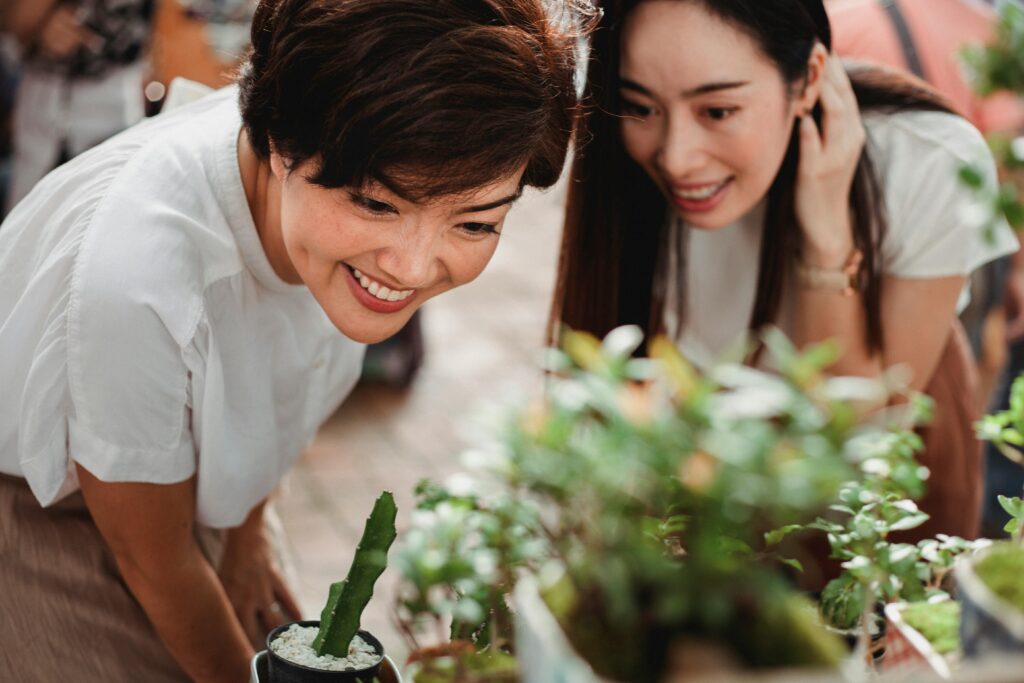
Checking Bonsai Health Before You Buy
Healthy bonsai trees share clear, observable traits: vigorous buds, deep green foliage, firm trunks, pest-free leaves, airy substrate, and a nebari that grips the soil like a tripod.
One of the first Fukien tea trees I ever bought looked lush until repotting season, when half the root pad smelled like sour compost and crumbled away. Had I scratched the surface of the bonsai soil, wiggled the trunk, or peeked under a few leaves, I’d have seen the warning signs.
You don’t have to learn the hard way. Here’s a field-tested system for choosing bonsai that’s saved me and many others from buyer’s remorse.
Key Takeaways
- Even, species-typical foliage color signals strong roots. Patchy yellowing often means nutrient deficiency or rot.
- Solid trunk with radial surface roots (nebari) resists wind wobble. A loose trunk usually hides decaying roots.
- Free-draining akadama-pumice mix keeps roots oxygenated. Muddy “garden dirt” suffocates them.
10-Point Bonsai Health Inspection
Run this checklist in order, from what you can see at a glance to what you confirm with a gentle prod. Each point earns a ✓ or ✕; pass eight or more and you’ve likely found a winner.
- Overall Vigor: Look for fresh buds, candle elongation, or glossy new leaves that match the season.
- Foliage Color & Texture: Look for deep green for conifers and rich, even pigment for deciduous trees. Avoid chlorosis, mottling, or a papery feel.
- Pest & Disease Scan: Flip leaves and crotches to look for scale bumps, mite stippling, or honeydew. Early pests are treatable. Heavy infestations mean you should skip the purchase.
- Trunk Taper & Scars: A wider base that narrows upward suggests age. Fresh wire scars or swelling create reverse taper headaches.
- Nebari Symmetry: Radial surface roots gripping the soil indicate stability and future aesthetic power.
- Substrate Quality: A gritty mix of akadama, pumice, or lava should let water drain in seconds. Sludge-packed soil is a red flag.
- Root Wiggle/Odor Test: Gently rock the trunk; movement at the soil line or a sour smell hints at rot.
- Branch Structure: Balanced ramification without bulging “inverse taper” keeps design options open.
- Pot Fit & Drainage: Roots circling outside or clogged holes mean repot or walk away.
- Species-to-Climate Match: Cross-check your USDA Plant Hardiness Zone or indoor conditions before falling for a tree that won’t thrive in your climate.
Spotting Bonsai Health Red Flags
These visual alarms say “put the wallet away” faster than any seller’s pitch.
- Spider-webbed leaf undersides = Mite colony.
- Blackened bark near soil line = Possible fungal canker or anaerobic roots.
- Yellow foliage on a juniper (they’re evergreen) = Stress, often root rot.
Climate-Smart Bonsai Purchasing
A healthy tree in the wrong ZIP code could still die. Use this quick guide before you fall in love.
- Cold Zones (≤ USDA 6): Larch, Scots pine, and trident maple all need winter dormancy.
- Mild Zones (USDA 7–8): Chinese elm, juniper, and Japanese black pine handle hot summers and light frost.
- Tropics/Indoor Only: Skip ficus and dwarf jade if your home dips below 55 F at night.
Price Transparency & Bonsai Buying Tiers
Bonsai health is non-negotiable, but finish level should align with your wallet and goals, including the bonsai style you’d like to achieve.
- Nursery Stock ($20–$80): Unglamorous but vigorous trunks ready for styling.
- Pre-Bonsai ($8 –$250): Field-grown trees with decent nebari and early branch structure — great learning value.
- Show-Ready Specimens ($500–$3,000+): Refined ramification, exhibition pots, and provenance. Inspect even harder; flaws cost more to fix.
Where to Buy Bonsai With Confidence
Source often dictates success. Aim for sellers who welcome your inspection, not rush it.
- Specialty nurseries & club sales. Staff can often unpot or prune for you on the spot.
- Reputable online vendors. Request 360-degree photos, close-ups of nebari, and a timestamped root shot before paying shipping.
- Avoid “mall bonsai” kiosks. These junipers live indoors for weeks before sale and may arrive half dead.
Common Bonsai Buyer Mistakes
These pitfalls sink more beginners than complex styling ever will.
- Falling for a pretty pot, not the tree. The tree is your real investment.
- Ignoring seasonal dormancy needs. Ficus can’t overwinter outside in Minnesota.
- Paying top dollar for trees with deep wire scars or inverse taper.
Bonsai Health FAQ
How can I check roots without repotting?
Slide a chopstick into the edge of the pot. If it comes out sour-smelling or black, pass on the purchase.
What pests should I scan for on a juniper?
Look for scale bumps, webbing mites, and aphid clusters under foliage pads.
Is yellow foliage always bad?
Not in deciduous bonsai species during autumn, but on evergreens it points to stress or nutrient issues.
Can I rehab a stressed tree I just bought?
Yes. Improve drainage, treat pests, and shade it for two weeks, but severe root rot or trunk cankers rarely recover.
